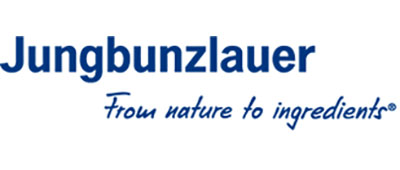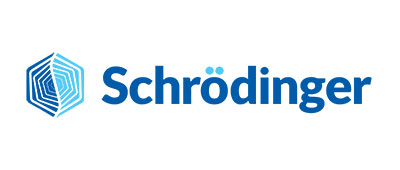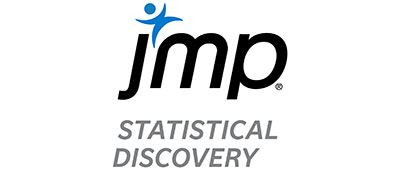Integrating Ion Chromatography in a Chemical Manufacturing Environment
Ion chromatography is a versatile and widely applicable technique for ion analysis, making it indispensable in chemical manufacturing settings. By addressing unique analytical challenges, it plays a crucial role in ensuring robust process and quality control.
In this webinar, we’ll hear from David Miyamoto, lab technical manager at Kuehne Company and Kuehne Lab Services, on how he incorporated IC into his analytical workflow. David will discuss where to start with determining IC as the right tool, how it can replace more tedious methods, and what you’ll need to get started. He’ll provide insight into the thought process behind IC method development, while also discussing specific IC application examples from the chlor-alkali industry, including challenges he faced such as complex sample matrices, and how he overcame them.
Following David’s discussion, Linx Waclaski, IC Product Manager at Metrohm USA, will provide further background on the theory and inner workings of an ion chromatograph, including options for further streamlining your analyses.
Take part in our live Q&A after the presentation to get your specific questions answered by our experts.
, , , , ,
Find out how IC can fit as an analytical tool within a chemical manufacturing environment, Learn about important considerations for developing an IC method and overcoming challenges, Understand the basics of IC from a theoretical and equipment standpoint
Analysts, technicians, chemists who want to learn how IC can be incorporated into a chemical manufacturing setting, Quality lab managers considering implementing IC into their lab
Analysis of Semiconductors through UV-Visible Techniques: Band Gap Studies
Semiconducting materials are widely studied for use in solar energy and photocatalytic applications, among other areas of interest. For applications which involve the use of light, it is important to understand the energy needed to promote electrons from the valence band to the conduction band. This band gap energy can often be on par with the energy of photons in the UV-Visible region. As such, UV-Visible spectroscopic techniques can be of use when assessing the band structure of semiconducting materials. Tauc plots, which are derived from the UV-Visible spectrum, provides the needed information to estimate the bandgap energy. In conjunction with computation and experimental results, the information gathered from the Tauc plot can aid in assessing the relative position of the valence and conduction bands. In this webinar, the use of UV-Visible reflectance and transmittance measurements for band gap analysis will be discussed in detail. Additionally, considerations needed when analyzing semiconducting samples with these methods with be outlined.
, ,
Melissa O'Meara, Associate Forensic Science Consultant, C&EN Media Group
Gain knowledge about the theory and application of Tauc plot analyses for both reflectance and transmittance measurements., Learn what sample properties and environmental factors can influence the measured spectra of a semiconducting sample., Understand the considerations needed to perform accurate UV-Visible measurements of films or colloidal solutions.
Research Scientist, Materials Scientist/Engineer, Semiconductor Engineer
Taking Experimentation Digital: Materials Innovation using Atomistic Simulation and Machine Learning At-Scale
Our world is evolving rapidly, and with it comes a wide range of challenges, including the need for sustainable and energy-efficient solutions, advanced electronic devices, and durable, lightweight materials for transportation, aerospace, and construction. Traditional methods for materials discovery or selection are no longer viable for keeping pace with demands.
In this talk, we will introduce a modern approach to materials R&D using a digital chemistry platform for in silico analysis, optimization and discovery. The platform enables materials design at-scale across a wide range of applications, including organic electronics, catalysis, energy capture and storage, polymeric materials, consumer packaged goods, pharmaceutical formulation and delivery, and thin film processing.
By combining both physics-based modeling approaches (e.g. DFT, molecular dynamics, coarse-graining) and machine learning, researchers can easily incorporate in silico methods into their day-to-day workflows to expedite R&D timelines. Moreover, automated solutions enable scaling from simple molecular property predictions on a local device to high-throughput calculations on the cloud.
We will present real-world case studies that were performed by both experienced modelers as well as novice experimentalists who are new to digital chemistry approaches.
, ,
Learn to leverage data from physics-based simulations and machine learning to accelerate materials R&D, Hear practical case studies and customer stories across materials industries including organic electronics, catalysis, energy capture and storage, polymeric materials, consumer packaged goods, pharmaceutical formulation and delivery, and thin film process, Identify key areas in your R&D where physics-based simulation and machine learning can provide value
R&D Leaders (VP of R&D, Director of R&D) interested in accelerating R&D timeline, Innovation Managers, Digitization Managers, Synthetic Chemists, Materials Scientists, Chemical Engineers, Materials Research Engineers, Computational Chemists, Computational Materials Scientists
Improve Your Pharmaceutical Workflows with Innovative UV-Vis Spectroscopy
UV-Vis spectroscopy is a mature technology used to analyze, characterize, and quantify pharmaceutical and biological samples such as active pharmaceutical ingredients, DNA/RNA, and proteins for many decades. The use of UV-Vis has been limited by the workflow needed to make these measurements efficiently. Recent advances in UV-Vis spectroscopy focus on enhancing lab productivity, offering ease of use, and providing multiple accessories designed specifically for application needs. Pharmaceutical and biopharmaceutical materials have become more sophisticated in life science research and the technology used for analysis should evolve too. This webinar will highlight the new Agilent Cary 3500 Flexible UV-Vis spectrophotometer and its capabilities in improving workflows in the pharmaceutical industry.
, ,
Use of the double beam Cary 3500 Flexible UV-Vis spectrophotometer for analyzing liquid and solid samples, See how wide linear dynamic range allows direct measurement of highly absorbing samples, minimizing sample prep time and increasing efficiency and accuracy., Use of a variable pathlength cell holder to measure impurities in ethanol as outlined in pharmacopeias (UPS, EP, and JP), Use of a solid sample accessory kit to determine spectral transmission measurements of plastic pharmaceutical containers in accordance with USP <671>.
Pharma/biopharma QA/QC laboratory analysts and laboratory managers, Chemical and Energy laboratory analysis and laboratory managers, Academia, Scientist and post-graduates
Beyond Ion Exchange: Advancing Wastewater Treatment in Metal Finishing
The metal-finishing industry faces the ongoing challenge of managing wastewater effectively, especially when treating dissolved metals such as copper and hexavalent chromium. These metals pose significant environmental risks and introduce compliance and financial challenges. Traditional ion exchange and chemical precipitation methods exhibit limitations in selectively targeting specific metals and rely on hazardous chemical handling and secondary waste product treatment. Both methods have limited effectiveness with increased metal concentrations, competing ions' presence, and dissolved solids' overall concentration.
Join James Landon, Chief Technology Officer at ElectraMet, as he introduces an innovative solution to conventional dissolved metal approaches, employing an electrochemical process to efficiently remove or convert dissolved metals. Beyond treatment, both sustainability and operational optimization hinge on real-time data. Learn how online Process Analyzer Technology (PAT) can revolutionize wastewater management, offering precise, real-time monitoring and analysis.
, , , , ,
Understand how the innovative electrochemical process overcomes challenges in metal finishing., Learn how real-time monitoring and analysis can optimize the wastewater treatment process, Learn how integrating electrochemical processes with PAT can transform wastewater into revenue
Process Engineers looking to optimize wastewater treatment processes or who are looking to implement PAT in their metal finishing lines, Sustainability and Operations Managers tasked with implementing eco-friendly practices within their organizations and overseeing the day-to-day operations of metal finishing lines, Environmental Compliance Officers tasked with ensuring their facilities meet regulatory standards for wastewater, Wastewater Treatment Consultants advising on wastewater management strategies
Standardizing environmental microplastics measurement for compliance monitoring: A case study of the California program
Increasing interest in microplastics in the environment has resulted in how microplastics may be regulated in this arena. These initiatives may occur at various levels and by various organizations, from international (e.g., European Chemical Agency, ISO documents) to national and subnational (e.g., federal and state efforts in the U.S.). They all require standardization of monitoring methods.
This presentation will provide an overview of the state of standardization, and challenges thereof, for microplastics measurement in the aquatic environment, from collection to extraction to quantification (e.g., by spectroscopic analysis). Particular emphasis is placed on efforts within the State of California, which is the first jurisdiction to require monitoring for microplastics.
, ,
Ann Thayer, Contributing Editor, C&EN Media Group
Progress towards standardized methods and testing requirements , What progress has been made in the development of standardized methodologies for microplastics in North America?, What are some of the key challenges that remain in the implementation of these?, How might these developments impact other areas and the potential for the implementation of regulations?
Microplastics researchers, Microplastics analysts from commercial, QA, or research labs seeking to understand key challenges in Microplastics analysis., Those interested in the contamination of wastewater, seawater, freshwater, air, sediments, and food (such as fish, shellfish, crustaceans, and bottled water)
Mastering Potentiometric Titration through Effective Electrode Selection and Method Optimization
Modern titration offers a simple, yet highly accurate method to ensure the quality and safety of many products we consume daily. While not a complicated technique, there are some subtleties that can ensure your titration results are accurate. Simple electrode care and optimization of basic titration parameters are crucial to helping you obtain results you can trust.
During this webinar, Sagar Irrinki, Quality Control Manager at Coastal Gulf & International, Inc. will share how his laboratory navigates executing these tests on various types of titration applications. and how to overcome challenges with helpful titration tips. Eduardo Simoes, Product Specialist for Titration at Metrohm USA, will provide guidance for electrode selection and best practices for electrode care and maintenance. Don’t miss the live Q&A at the end to get all your questions answered by Sagar and Eduardo.
, , , , ,
Understand potentiometric electrode care and maintenance , Learn how to overcome titration challenges with useful tips, Receive simple guidelines to remove doubt from titration results , Learn how to select the appropriate electrode for your titration
Anyone who wants to learn more about electrode care and maintenance, People interested in improving the consistency of their titration results, Anyone who needs a refresher on titration best practices, Chemists who want simple tips to improve confidence in titration analysis
Pushing the Frontiers of Mass Spectrometry
To remain competitive against other technologies, mass spectrometry (MS) needs to rise to the challenge of unprecedented throughput with very deep analyses of very complex samples. With analysis time reduced to several minutes by fast liquid separations, confident identification and quantitation over many orders of dynamic range still requires a generational leap in the sequencing performance of MS. The Thermo Scientific™ Astral™ analyzer is a novel class of high-resolution accurate-mass analyzer that compliments the Thermo Scientific™ Orbitrap™ analyzer to provide high speed and sensitivity measurements.
This webinar will explore the underlying technology of the Thermo Scientific™ Orbitrap™ Astral™ mass spectrometer and its’ application to biomedical research. Rethink what is possible with a mass spectrometer including the analysis of 300 proteomics samples per day, measuring 5,000 proteins from a true single-cell, and collecting fragmentation data on over 90% of compounds in metabolomics experiments.
, , , , ,
Ann Thayer, Contributing Editor, C&EN Media Group
Learn about the novel technology of the Orbitrap Astral mass spectrometer , Understand the benefits of the Orbitrap Astral mass spectrometer , How to apply the Orbitrap Astral mass spectrometer to solve biological questions
Academic Researchers , R&D Scientists , Lab Technicians, Principal Investigators, Lab Managers
Mastering Tricks for Improving Chromatography in Difficult Samples
Ion chromatography, a crucial method for separating and quantifying ionic components, faces complexities in diverse sample matrices. To meet stringent analysis standards and ensure IC component longevity, sample pretreatment is essential. Samples with elevated particulate loads, extreme pH, colloids or high cation concentrations jeopardize chromatographic integrity, potentially reducing column lifespan. Considerations extend to IC-incompatible matrices, like those involving organic solvents, and scenarios requiring ultra trace analyses with preconcentration.
While manual methods exist, the revolutionary shift to inline automation for sample preparation promises increased efficiency, throughput, prolonged column lifespan and notable enhancements in data accuracy and reproducibility. Join our upcoming webinar for an insightful exploration led by Sylvia Singh, Ion Chromatography Applications Specialist at Metrohm USA, who will unravel the intricacies and significant benefits of inline sample preparation for analytical processes.
, ,
Melissa O'Meara, Associate Forensic Science Consultant, C&EN Media Group
Learn about the benefits of inline sample preparation for ion chromatography, Discover the types Metrohm inline sample preparation that are available, Gain an understanding of applications that benefit from inline automation, Learn how to choose the best inline sample prep technique for your sample type and laboratory need
Analysts, technicians, chemists who are either currently using or plan to use IC , Lab managers considering automation for their current IC , Students and researchers who may use IC
Mastering UPW Quality with Real-Time Trace Ion Detection
Ultrapure water (UPW) is crucial for the production of superior-quality semiconductors, but ensuring final product quality can be a challenge without the right tools. UPW undergoes extensive and costly purification, utilizing various physical and chemical treatments to meet increasingly rigorous purity standards. In the face of global water shortages, efficient UPW production is essential. Water recycling facilities at semiconductor plants are tasked with addressing this concern, regenerating wastewater back into UPW. However, the integrity of regenerated UPW must be verified to ensure final product quality. This is where online ion chromatography provides a novel advantage: detecting trace anions, cations, and silica contaminants in real-time down to parts-per-trillion levels.
Join us for a conversation with two industry experts: Ben Greenwood, Senior Manager at Micron Technology's Chemistry Lab, and Dariana Martinez, Product Application Specialist at Metrohm USA. Together, they will delve into the pressing water challenges currently faced by the semiconductor industry. Additionally, they will shed light on the pivotal role of ultrapure water and the significance of real-time ion chromatography to ensure quality control.
, , , , ,
Melissa O'Meara, Associate Forensic Science Consultant, C&EN Media Group
Understand the pivotal role of ultrapure water (UPW) in semiconductor manufacturing and its direct impact on product quality and performance. , Gain insights into the scale of water consumption in the semiconductor industry and the pressing challenges faced in meeting increasingly rigorous purity standards. , Discuss the advanced analytical capabilities of online ion chromatography, and learn how it accurately measures anions, cations, and silica contaminants to verify UPW purity.
Anyone interested in leveraging automation for process optimization and near-real-time data analytics, Process engineers and plant operators responsible for analytical testing and QA/QC Managers responsible for ensuring maximum product quality, Those involved in adopting or implementing Industry 4.0 initiatives and/or focused on developing newer, more efficient manufacturing processes
Direct Analysis of Glycosylated Therapeutics
Glycosylation plays a crucial role in determining the pharmacological properties of biotherapeutics. The molecular heterogeneity of glycosylated biotherapeutics makes it difficult to provide thorough characterization of intact glycoproteins by mass spectrometry. Current methods for analyzing biotherapeutics only measure fragments of the compound or rely on partial digestion of the glycans to reduce sample complexity. These limitations pose important risks and challenges for biotechnology companies that need to report human-compatible and consistent glycosylation, critical for drug safety and efficacy.
We will present a new approach to glycoform fingerprinting that uses proton-transfer charge-reduction with gas-phase fractionation to analyze intact glycoproteins by mass spectrometry. The method provides a detailed landscape of the intact molecular weights present in biotherapeutic protein preparations in a single experiment and offers insights into glycoform composition when coupled with a suitable bioinformatic strategy. In addition, we highlight the application of charge detection native mass spectrometry (Direct Mass Technology mode) towards the elucidation of masses and aggregation of heterogeneous glycosylated biotherapeutics.
, ,
Ann Thayer, Contributing Editor, C&EN Media Group
How to elucidate masses from heterogeneous glycosylated biotheraputics , Learn how proton transfer charge reduction (PTCR) can simplify complex protein mixtures , Learn when to use PTCR based methods compared to Direct Mass Technology mode for analysis of biotherapeutics
Laboratory Managers , Biopharmaceutical Researchers , Protein Scientists
Exploring Methods for Antioxidants, Oil and Condition Monitoring in Tribology
Effective oil and condition monitoring enables proactive maintenance strategies and minimizes unexpected failures of machinery such as turbines. By closely monitoring the condition of lubricating oils, maintenance professionals can reduce downtime, extend equipment lifespan and identify potential issues before they escalate. Antioxidants are often added to mitigate these issues, which makes monitoring these chemicals critical for equipment performance.
Join Paul Swan, Technical Manager, APAC at ALS Tribology, and Larry Tucker, Director of Norms and Standards at Metrohm USA, as they discuss vital aspects of oil and condition monitoring and the importance of antioxidants in tribology. Gain valuable knowledge on ASTM methods and discover the latest insights into improvements being made in these areas.
, , , , ,
Melissa O'Meara, Associate Forensic Science Consultant, C&EN Media Group
Importance of antioxidants in lubricants and their impact on equipment performance, How to use voltammetry as a tool to monitor remaining useful life on antioxidants in lubricating oils, Importance of oil analysis in predictive maintenance strategies, Understanding the significance of condition monitoring in preventing unexpected failures, Insights into developments aimed at refining ASTM methods
Anyone currently monitoring remaining useful life of antioxidants in lubricating oils, Anyone using ASTM methods for oil and condition monitoring, Laboratories, equipment manufacturers, oil and additive producers and electric utilities looking to monitor oil conditioning and antioxidant levels in use


























